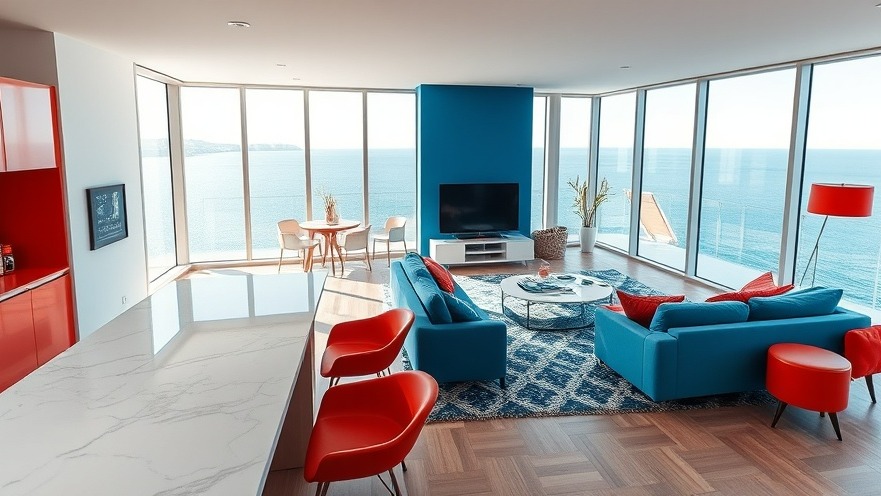
Corner Windows: The Perfect Blend of Function and Style
In the contemporary architectural landscape, corner windows are increasingly gaining popularity as a feature that not only enhances the aesthetic appeal of a home but also plays a crucial role in the functionality of living spaces. Digital nomads, often seeking optimal work environments that support both creativity and productivity, can greatly benefit from the strategic design of corner windows.
What Makes Corner Windows So Attractive?
Corner windows allow natural light to flood a space from multiple angles, significantly improving the indoor environment. They create a seamless connection between the indoor and outdoor worlds, which can be particularly refreshing for those working from home. With installations such as the stunning Verdant House in London, characterized by sweeping curves that invite the garden into the home, the mood-boosting effects of sunlight can enhance productivity for anyone, especially remote workers.
Design Variations of Corner Windows
From floor-to-ceiling designs that maximize views, such as the I/O Cabin in Norway, to unique multi-functional interpretations, corner windows come in various forms. For instance, some designs incorporate seating areas or green spaces, creating cozy nooks where individuals can relax or stay focused on work. The Nordmakka cabin, with its geometric windows providing unobstructed views of forested landscapes, exemplifies how corner windows integrate beautifully into nature, enhancing tranquility and concentration.
Benefits of Incorporating Corner Windows into Your Workspace
Having ample natural light is known to improve mood and productivity. Corner windows achieve this by providing expansive views and filling interiors with soft, diffused light. Not only do they contribute to a more open feel, but their design allows homeowners to maximize the available space without obstructing views with heavy curtains or furniture. This openness can lead to a more comfortable and stimulating workspace, which is essential for digital nomads.
Energy Efficiency in Design
While the beauty of corner windows is evident, it’s crucial to consider their impact on energy efficiency. According to experts, large expanses of glass can lead to higher energy expenditures. However, this doesn't have to be the case. Using high-quality materials like aluminum or uPVC, combined with advanced glazing, can mitigate heat loss in winter and prevent overheating in summer. The right design considerations will not only maintain a comfortable temperature year-round but also boost overall sustainability in your living environment.
Practical Interior Layouts with Corner Windows
Corner windows' structural profile allows you to design a practical layout that enhances the functionality of a workspace. They facilitate a variety of furniture placements without sacrificing light or views, providing flexibility in designing your remote work space. For instance, a corner window can position a desk to take advantage of the light without glare, while also complementing an inviting seating area. This dynamic can inspire creativity and foster productivity.
Common Misconceptions About Corner Windows
Many people assume that corner windows are just another design gimmick. However, their function extends far beyond aesthetics. They not only enhance natural light intake but also promote well-being through visual connection with nature. Installing corner windows can transform a simple home into a haven of comfort and enhance the productivity of individuals working remotely. Misunderstandings about corner windows often stem from a lack of awareness of their multifunctional design benefits.
In conclusion, corner windows stand out not only for their artistic designs but also for their functional benefits. Enhanced natural light, improved well-being, and versatile interior design options make them an excellent choice for digital nomads aiming for a productive and joyful workspace.
Feeling inspired to enhance your workspace with corner windows? Explore the various styles and designs to find the perfect fit for your home.
 Add Row
Add Row  Add
Add 




Write A Comment